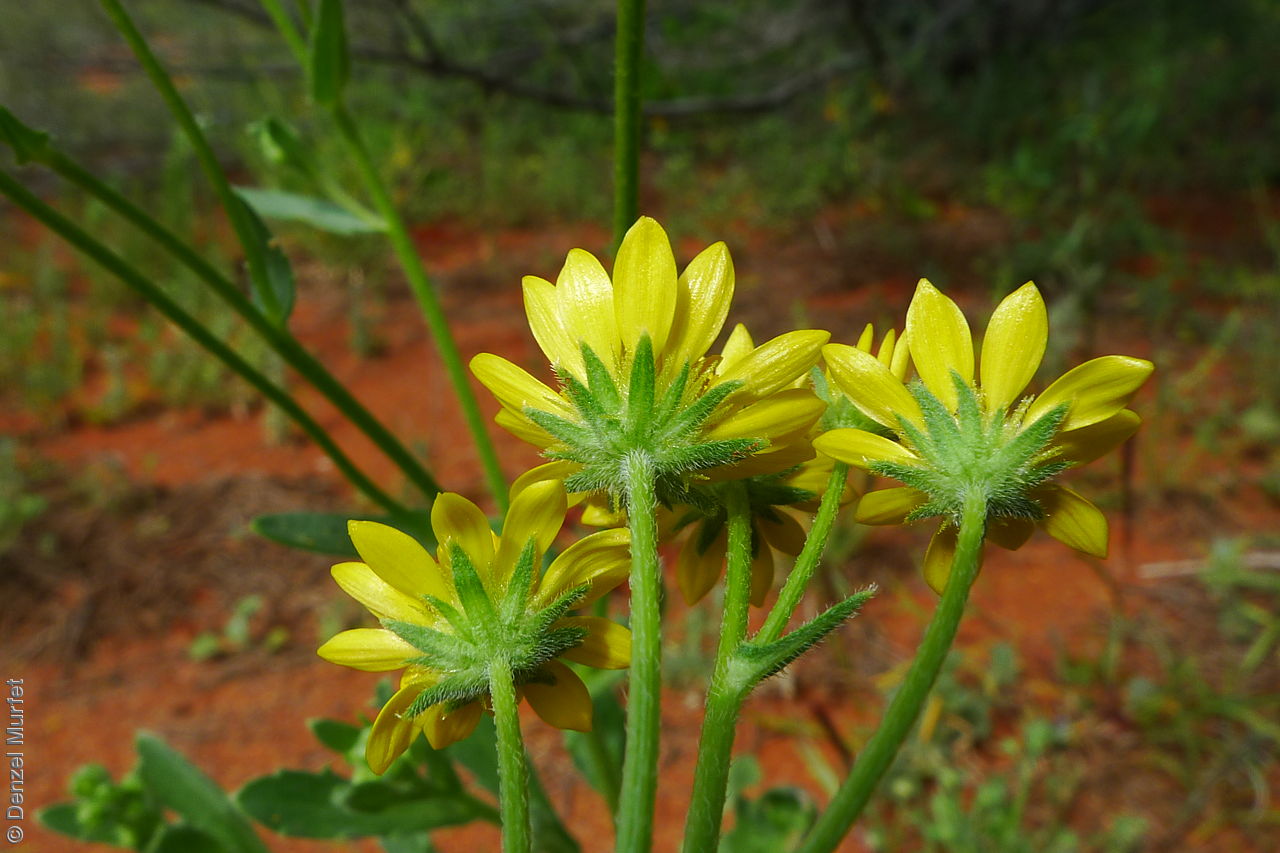










Botanical art
Etymology
Calotis from the Greek 'kalos' meaning beautiful and 'otos' meaning ear, after the first species named in the genus Calotis cuneifolia which has an ear-shaped pappus.
Distribution and status
Found from the north-west corner to the New South Wales border in South Australia, in moist open areas. Also found in Western Australia, Northern Territory, Queensland and New South Wales. Native. Common in South Australia. Uncommon in Western Australia and Quensland. Common in the other States.
Herbarium regions: North Western, Lake Eyre, Gairdner-Torrens, Flinders Ranges, Eastern, Murray
NRM regions: Alinytjara Wilurara, South Australian Arid Lands, South Australian Murray-Darling Basin
AVH map: SA distribution map (external link)
Plant description
Perennial herb to 40 cm high; stems erect, branched, strigosehirsute, becoming woody at the base only. Base leaves petiolate, oblanceolate, to 7 cm long and 18 mm wide, coarsely serrate. Stem leaves sessile, oblanceolate to cuneate, to 6 cm long and 12 mm wide, acute, entire to shallowly dentate, subamplexicaul at the base, strigose to scabrous. Flower-heads in loose leafy terminal cymes of 4-30 flowers, ray florets yellow. Flowering between May and October. Fruits are brown, dense round spiny fruit-head. Seeds are brown wedge-shaped seed to 2 mm long, with numerous hairy spines at one end. Seed embryo type is spatulate, fully developed.
Seed collection and propagation
Collect seeds between September and December. Collect mature seed heads that are dried and turning brown by picking off the heads and placing them in a paper bag. Be careful as the heads are spiny. Leave the heads in the paper bag to dry for at least a week. No further cleaning required if only the heads are collected. If other material were collected, use a sieve to seperate the unwanted matyerial. Whole heads can be stored with a desiccant such as dried silica beads or dry rice, in an air tight container in a cool and dry place. Seeds are non-dormant, viable seed should germinate readily.
| Location | No. of seeds (weight grams) | Number of plants | Date collected | Collection number Collection location | Date stored | % Viability | Storage temperature |
|---|---|---|---|---|---|---|---|
| BGA MSB | 7,200 (28 g) 7,200 (28 g) | 17-May-2007 | RJB71810 North Western | 1-Aug-2007 | 55% | -18°C | |
| BGA | 28,000 (80.35 g) | 50+ | 4-Mar-2010 | KHB396 Flinders Ranges | 1-Jan-2012 | 70% | -18°C |
Number of plants: This is the number of plants from which the seeds were collected.
Collection location: The Herbarium of South Australia's region name.
% Viability: Percentage of filled healthy seeds determined by a cut test or x-ray.